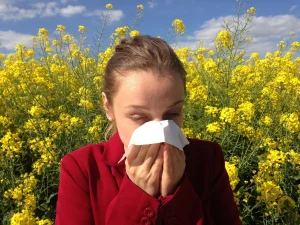The alluring scent of incense can add ambiance to your space, but is it harming your health? This guide explores the potential risks of incense smoke, offering insights on responsible burning practices and alternative solutions for a fragrant and healthy environment.
Burning Incense: Aromatic Bliss or Health Risk?
Incense, with its aromatic smoke and cultural significance, has been used for centuries. However, recent concerns about the health risks of incense smoke have sparked debate. Is the fragrant ritual friend or foe to your respiratory health? This blog delves into the science behind incense smoke, exploring its potential downsides and offering tips for responsible burning practices and alternative solutions.
The Allure of Incense: A Multi-Sensory Experience
Incense burning transcends mere fragrance. It’s a sensory experience used for:
- Relaxation: Certain incense scents, like lavender or chamomile, are known for their calming properties.
- Meditation: The act of burning incense can enhance focus and create a meditative ambiance.
- Religious Ceremonies: Many religions incorporate incense as a symbolic element in rituals and prayers.
- Air Freshening: Incense can mask unpleasant odors and add a pleasant fragrance to a space.
However, the enjoyment of incense shouldn’t come at the expense of your health. Let’s explore the potential downsides of inhaling incense smoke.
The Downside of Smoke: Potential Health Risks of Incense
Burning incense generates smoke that contains various particles and chemicals, some of which can be harmful to your respiratory health, particularly for individuals with pre-existing conditions like asthma or allergies. Here’s a breakdown of the potential risks:
- Particulate Matter: Incense smoke releases fine particulate matter (PM), which can irritate the lungs and worsen respiratory problems.
- Carcinogens: Certain incense varieties, especially those containing synthetic fragrances or additives, may release carcinogenic compounds when burned.
- Respiratory Irritation: Inhaling incense smoke can irritate the airways, causing coughing, sneezing, and congestion.
- Aggravated Asthma: For individuals with asthma, incense smoke can trigger asthma attacks and worsen symptoms.
While research on the long-term health effects of incense smoke is ongoing, it’s crucial to be aware of the potential health risks, especially if you have underlying respiratory conditions.
Burning Wisely: Minimizing Risks When Using Incense
If you enjoy using incense, here are some tips for responsible burning to minimize potential health risks:
- Ventilation is Key: Always burn incense in a well-ventilated area to disperse the smoke and prevent it from accumulating. Open windows and doors whenever possible.
- Less is More: Start with a small amount of incense and gradually increase if needed. Burning excessive incense creates more smoke and increases health risks.
- Choose Natural Incense: Opt for natural incense made with essential oils and minimal additives. Avoid synthetically fragranced incense, which may contain harmful chemicals.
- Consider Alternatives: Explore alternative ways to enjoy fragrance in your space, like essential oil diffusers, scented candles (use with caution due to similar smoke concerns), or potpourri.
Beyond Incense: Alternative Solutions for a Fragrant Home
If you’re concerned about the health risks of incense smoke, there are several ways to create a pleasant and fragrant ambiance in your home:
- Essential Oil Diffusers: Diffusers use water vapor to disperse essential oils into the air, offering a natural and customizable fragrance experience.
- Scented Candles: While candles also involve burning, choose natural soy or beeswax candles with essential oil fragrances for a healthier alternative. Remember to prioritize ventilation when using candles.
- Potpourri: Beautifully arranged potpourri bowls filled with dried flowers, herbs, and essential oils offer a long-lasting and visually appealing way to add fragrance to your space.
- Air Purifiers with Fragrance Options: Certain air purifiers offer the functionality of diffusing essential oils in addition to purifying the air.
These alternatives minimize the risks associated with burning incense and provide a safe and enjoyable way to create a fragrant environment.
Conclusion: Finding Balance: Enjoyment and Health
Incense can be a beautiful addition to your home, offering fragrance and a sense of ambiance. However, it’s crucial to be mindful of the potential health risks associated with inhaling incense smoke. By adopting responsible burning practices, choosing natural incense varieties, or exploring alternative solutions like diffusers or potpourri, you can enjoy the aromatic benefits of incense without compromising



